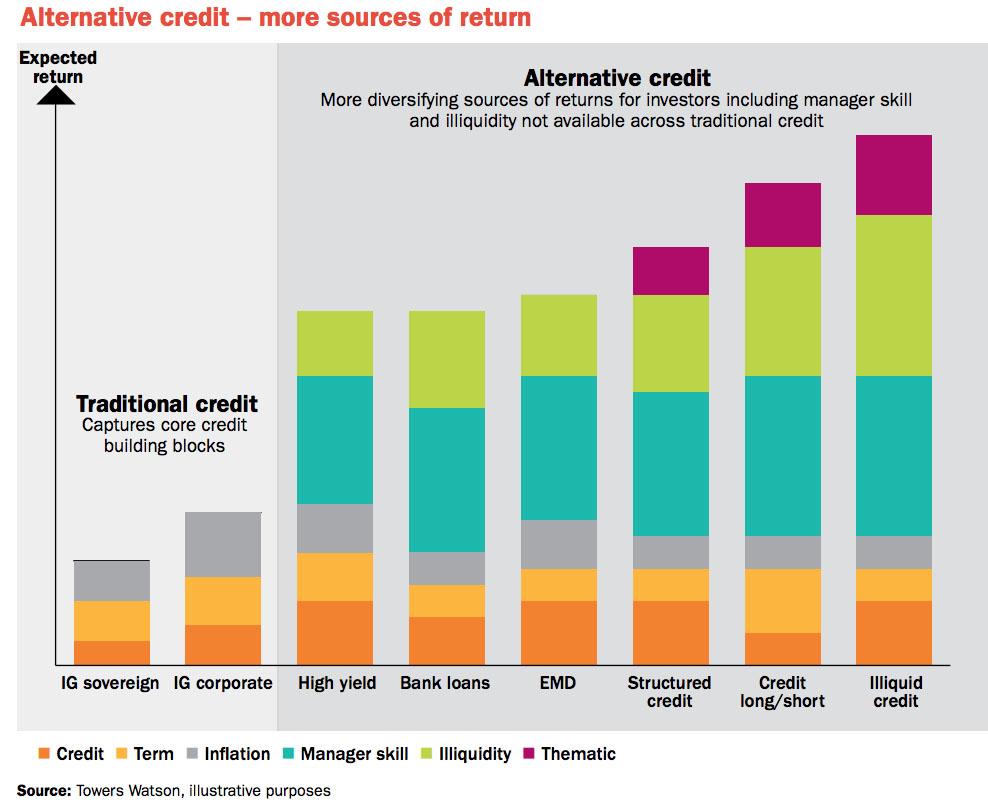Investors have much to gain from turning to alternative credit, argued Towers Watson in a new research paper.
In the report, the firm asserted that by investing more in alternative credit, institutions could reduce their reliance on the equity risk premium without wholly sacrificing returns.
Alternative credit—defined in the report as all credit outside of traditional investment-grade government or corporate debt—ranges from liquid high-yield bonds and bank loans to more illiquid distressed debt and specialty finance strategies.
In comparison with traditional credit, alternative strategies offer a wider variety of risk premia. By exploiting the diversification benefits of alternative credit, Towers Watson argued investors could achieve better risk-adjusted returns.
In particular, the report noted investing in alternative credit reduces exposure to interest rate risk—an especially important consideration at a time of rate uncertainty, the firm added. From October 2010 to March 2011, the most recent period of rising interest rates, the study found that alternative credit sources largely outperformed traditional credit.
Chris Redmond, global head of credit at Towers Watson, said alternative credit has been historically accessed through hedge funds or small off-benchmark allocations within existing traditional fixed-income mandates. More recently, however, the emergence of dedicated alternative credit specialists and strategies has made it more accessible—but there is “still a long way to go,” he said.
“The opportunity remains underinvested and misunderstood by many institutional investors,” Redmond said. “Institutional investors’ investment in alternative credit so far is a drop in the enormous roughly $40 trillion global credit markets’ ocean.”
While alternative credit makes up 25% of global credit offerings, Towers Watson clients have only invested 8% of their total credit portfolios in the asset class, according to the report. Illiquid credit fared even worse, with less than 1% of client portfolios dedicated to it.

Related: Private Debt Supply Lines Swelling, Says Moody’s & Distressed PE ‘Likely to Outperform Consistently’
